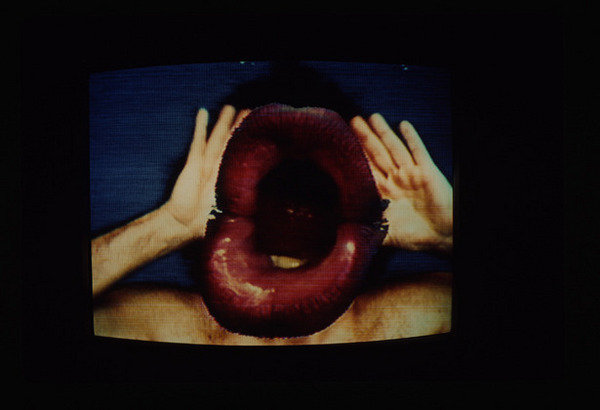Videofreex
dal 6/2/2015 al 11/7/2015
Segnalato da
6/2/2015
Videofreex
Samuel Dorsky Museum, New York
This exhibition surveys the history and mythology of the Videofreex, one of the world's first video collectives, a collective of artists, storytellers, and activists who produced and disseminated alternative media across New York and other U.S. communities during the 1970s.

Curated by: Andrew Ingall
This exhibition surveys the history and mythology of the Videofreex, one of the world's first video collectives, a collective of artists, storytellers, and activists who produced and disseminated alternative media across New York and other U.S. communities during the 1970s.
Organized by independent curator and scholar Andrew Ingall, the exhibition, which includes 22 newly restored videotapes, over 90 photographs and slides, and nearly 80 other objects including drawings, prints, ephemera, publications, and historic audiovisual equipment, surveys the history and mythology of the Videofreex. This collective group of artists, activists, and storytellers, produced and disseminated alternative media in New York City and in other U.S. communities from 1969 to 1978. They ran community educational workshops and presented new work in important museum exhibitions, published articles in Radical Software, and screened tapes at The Museum of Modern Art.
The materials on exhibit, largely borrowed from the personal archives of the Videofreex themselves, display the Videofreex as documenters and broadcasters of counterculture, participants in significant exhibitions of video art, and precursors of a new generation of artists utilizing social media and social practice. Highlights include vintage video interviews with political activists Abbie Hoffman and Fred Hampton, images of feminist and anti-war protests, and humorous programs like The Buckaroo Bart Show and The Lanesville TV Newsbuggy.
Though the Videofreex primarily worked as a collective, individual members created and exhibited video in museums and festivals. Videofreex: The Art of Guerrilla Television includes the remastered and digitized 4-channel Quaking Aspens (1972) by Davidson Gigliotti, who was among the first video artists to explore the sculptural qualities of multi-channel installation.
The Videofreex exploited the new technology of portable video as an emerging medium for creative expression and as a democratic tool for disseminating independent points of view in a pre-digital age. By establishing the first pirate television station in the United States, the Videofreex created a base for media education and training, and an informal media art center hosting local and international visitors.
Exhibition overview Videofreex: The Art of Guerrilla Television will include the following sections:
"Subject to Change," the legendary CBS television pilot presentation developed by the Videofreex in 1969 that documented the counterculture movement.
Art Scene and Art Seen features documentation of performances; individual and collective Videofreex work exhibited in nonprofit galleries, museums, and festivals; and activity resulting from an artist residency at WNET's TV Lab.
Social and Political Movements features documentation of political events including early Women's Liberation demonstrations and the 1971 May Day anti-war demonstration in Washington, DC.
Maple Tree Farm, a base where the Videofreex broadcasted Lanesville TV, offered mobile workshops in upstate New York, and hosted US and international video makers eager to learn, network and collaborate.
Freex Out, a dynamic workshop/studio space for temporary screenings, as well as live streaming and broadcasting by students, community groups, and guest artists.
Publici Programs:
The campus community and general public are invited to a panel discussion on Sunday, March 8, 2015, and film screenings at the College and select regional theaters, including the Jacob Burns Film Center in Pleasantville, NY, on Thursday, February 12. Program partners include the Rosendale Theatre Collective and Spark Media Project (formerly known as Children's Media Project), and Wave Farm.
About the Videofreex
Videofreex was one of the pioneer production groups that formed when consumer video was first introduced in the late 1960s. Over the nine years as a collective, they produced several thousand videotapes, installations, and multimedia events and trained hundreds of videomakers in the brand new video medium. The core members of the Videofreex, many of whom are active today as artists, journalists, and media makers, include Skip Blumberg, Nancy Cain, David Cort, Bart Friedman, Davidson Gigliotti, Mary Curtis Ratcliff, Parry Teasdale, Carol Vontobel, Ann Woodward, and the late Chuck Kennedy. The Videofreex established their archive at Video Data Bank, Chicago, in 2001, and are the subjects of a forthcoming documentary film by Jenny Raskin and Jon Nealon.
Image: Ann Woodward, Videophones and Videomirrors, 1974. Inkjet print, 17 x 23 inches. Printed 2014. Courtesy Ann Woodward (Videofreex).
Opening: February 7, 5–7pm
Samuel Dorsky Museum of Art
SUNY New Paltz
New Paltz, NY 12561



